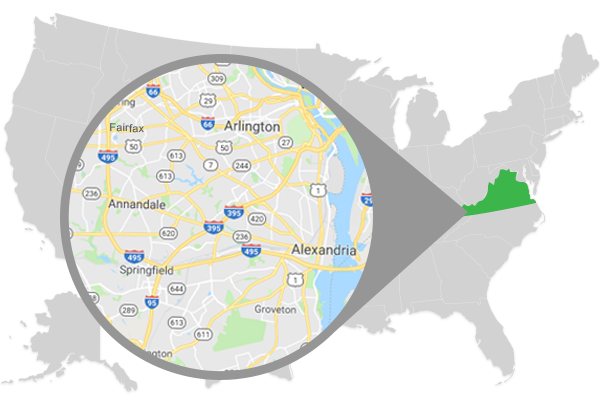Where do most of them live?
Two types live in the forests of North America: the northern flying squirrel and the southern flying squirrel. Northern flying squirrels live throughout Canada and in southeast Alaska. South of Canada, they range into California and can be found in the Yosemite Valley.
Are they dangerous?
Flying squirrels are not dangerous and pose no health hazard. They’re not aggressive but they do have sharp teeth. If you have flying squirrels denning in your attic or wall voids, call a Summit Environmental Solutions wildlife professional that is licensed and trained in nuisance wildlife work.
Are they rare?
Only two flying squirrels are native to the New World. Both American species are widespread, although some subspecies are relatively rare, like the endangered Carolina northern flying squirrel (G. sabrinus coloratus) or the San Bernardino flying squirrel (G. sabrinus californicus) of Southern California.
How long do they live?
Southern flying squirrels in the wild can live to 5 or 6 years old. In captivity, they have been known to live up to 10 years.
What do they eat?
Flying squirrels are omnivores. They eat a variety of foods, including seeds, nuts, fungi, fruit, and insects. Southern variety is considered one of the most carnivorous squirrels because they supplement their diet with eggs, birds, and carrion.
Do they actually fly?
The colugos, Petauridae, and Anomaluridae are gliding mammals which are similar to flying squirrels because of convergent evolution. These mammals can glide through the trees, but they do not actually fly (like birds and bats). They have a membrane of skin on either side of their body.
Are sugar gliders and flying squirrels the same?
By studying their genes and other traits, biologists have figured out that sugar gliders and flying squirrels are probably not very closely related. Sugar gliders are marsupial mammals and flying squirrels are placental mammals.
Do they make good pets?
At this age, they are sure to bond with you. As the squirrel gets older, it will become less likely to bond with a human; for this reason, adult flying squirrels sold in pet stores will not make good pets. The squirrel will sleep happily while you carry on with your day.
Do they carry rabies?
Flying Squirrel Damage. … If the squirrel bites and is carrying typhus, this disease can cause rashes as well as delirium. While it is rare, these squirrels may also carry rabies, a disease that can cause severe damage to the central nervous system if left unchecked.
Do they hibernate?
Usually, aggregate nests contain 4 to 10 individuals. The sharing of nests in winter by northern flying squirrels is important in maintaining body temperature (biothermal regulation), as northern flying squirrels do not hibernate, nor do they enter torpor states.
How many babies do they have?
After a gestation period of roughly 40 days, the female flying squirrel gives birth to between 2 and 7 baby flying squirrels, which are blind and naked when they are born. The baby flying squirrels develop fur and open their eyes when they are about a month old.
How far can they glide?
When the legs are outstretched, the skin stretches out tautly to form a large planing surface which enables the squirrel to glide as far as 295 feet, though most glides are between 20 and 30 feet. The patagium is elastic and retractable, allowing them to be nimble when they are running or climbing.
Are they rodents?
A few species of anomalure are occasionally called scaly-tailed, but these rodents are classified in the family Anomaluridae. Some researchers have speculated that Pteromyinae is not a single group but members from two different clusters of tree squirrels or possibly non-squirrel ancestors.
Where can they be found?
North America. Two types live in the forests of North America: the northern flying squirrel and the southern flying squirrel. Northern flying squirrels live throughout Canada and in southeast Alaska. South of Canada, they range into California and can be found in the Yosemite Valley.
Are squirrels nocturnal?
Squirrels are diurnal – that means they are primarily active in the daytime. If you hear noises in the attic during the day, it’s very likely from squirrels. If you hear sounds during the night, they are most likely made by a nocturnal animal, such as a raccoon, opossum, rat, or mouse.
What diseases can you get from them?
Dangerous Diseases from Squirrels in the Home
- Leptospirosis. This is transmitted when animal urine comes into contact with open wounds (i.e. scratches, bites).
- Lyme Disease. A squirrel doesn’t have to bite you to expose you to diseases, Salmonellosis. This infection is caused by Salmonella bacteria, which can be found in animal feces.
- Tularemia.
- Rabies.
What are some of their adaptations?
The structural adaptations of the flying squirrel have developed a good sense of balance, sail-like fur skin membrane that extends from the wrists to ankles, delicate wrist bones that control this membrane, allowing the squirrel to steer, and a fluffy tail that balances out and stabilizes the flight. These little animals glide so swiftly and elegantly through the air it is quite amazing to see one glide and a rare opportunity as they only come out at night so we hardly ever get to see them in flight.
If you suspect you have an issue with these flying rodents, contact us for a free inspection and estimate.




